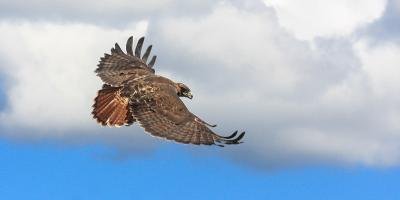Alex’s Favorite Birds
All wildlife is beautiful but my personal favorites are the Broad Billed Tody and the Ridgeway Hawk. Both are stunning in their own right the Tody is a cute little green bird with a red throat that I often catch swimming his way through the treetops in Cotubanama National Park. The Ridgeway Hawk is magnificent and the undisputed lord of the skies in the eastern Dominican republic. I often see him being pestered by small birds after an easy meal, and on occasion flying low over the River Yuma in hopes to scoop up on unsuspecting mullet! Here’s some more info on them.
The Broad-billed Tody: A Jewel of the Forest
The Broad-billed Tody (Todus subulatus) is one of the Dominican Republic's most charming endemic birds. This tiny bird, often no larger than a hummingbird, is known for its bright green back, red throat, and strikingly broad blue bill. Found primarily in the lowland forests and wooded areas of Hispaniola, the Broad-billed Tody is a master insect hunter, often seen darting through the air to catch its prey.
One of the most fascinating things about this bird is its nesting behavior. Unlike many other birds, the Broad-billed Tody digs small burrows in earthen banks or soft soil to create its nest, where it raises its young. Despite its small size, the tody’s bright colors and lively movements make it a favorite among birdwatchers. These birds are often spotted flitting about in the shade, calling to one another with high-pitched trills and chirps. Their ability to blend into the foliage, yet stand out with their vibrant colors, makes them a true jewel of the Dominican forests.
Ridgeway’s Hawk: A Skilled Hunter of Hispaniola
The Ridgeway’s Hawk (Buteo ridgwayi) is a small but powerful bird of prey native to the Dominican Republic. Known for its sharp talons and keen eyesight, this hawk is an expert hunter, feeding primarily on reptiles, small mammals, and birds. It is often spotted in dense forests or perched high in trees, scanning the ground for movement. With its pale gray-brown plumage, barred tail, and broad wings, the Ridgeway’s Hawk blends into the landscape as it soars silently through the air. Agile and adaptable, it uses its strong wings to swiftly maneuver through the forest canopy, making it a top predator in its habitat.
The Ridgeway’s Hawk is also known for its distinctive nesting habits. These birds typically build their nests high up in tall trees, using twigs and leaves to create a sturdy platform. The female usually lays 1-2 eggs, and both parents take turns protecting the nest and feeding the chicks. Despite being highly territorial, they exhibit remarkable cooperation in raising their young. Their calls, a sharp, high-pitched "klee-klee-klee," can often be heard echoing through the forests as they communicate or warn others away from their nesting area. Their ability to thrive in diverse habitats, from forests to semi-open areas, showcases their adaptability as skilled hunters and protective parents.




